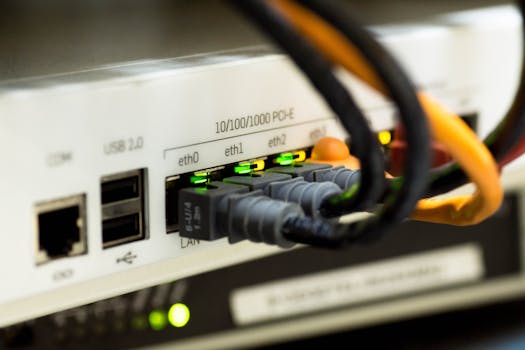Apps
The Future of Interaction: Headless Apps and the Usage Revolution
Advertisement
In recent years, technological advances have shaped the way we interact with electronic devices. These developments bring several innovations, particularly regarding user interaction with applications. One of the most discussed topics currently is the future of interfaceless applications.
With the rise of artificial intelligence and voice recognition, the user experience is being redefined. The trend points to a world where device control will be primarily through voice commands and gestures. This transformation has significant implications not only for developers but also for users across a variety of spheres.
This article discusses the future of headless apps, focusing on how voice and gestures are becoming the primary forms of interaction. We'll analyze the technologies involved, the benefits and challenges, and the potential implications for the app development market.
What are headless apps?
Headless apps are solutions that eliminate the need for traditional graphical elements. They allow interaction through voice commands or simple gestures. This approach can transform the way we use smartphones and connected devices.
These apps leverage technologies like speech recognition and personalized gestures. This facilitates interaction, making it more intuitive and accessible. Consequently, many users will feel more comfortable using these methods.
By removing graphic elements, the user experience becomes more fluid. This is particularly beneficial in environments where hands can be inconvenient, such as driving or cooking. The evolution of virtual assistants contributes to this complete change in interaction.
Furthermore, the functionality of headless apps is expanded, allowing more devices to integrate. This means that, in the future, voice commands and gestures could control everything from home appliances to vehicles. Connectivity is key in this context.
Ultimately, this innovation represents a growing trend in our everyday technology. As we explore the future of interface-less apps, we'll see an increase in the use of natural commands instead of clicks and taps.
The technology behind headless apps
The heart of headless applications lies in speech recognition technology. Machine learning and artificial intelligence play a vital role in this process. These innovations make human-machine communication more natural and efficient.
In addition to voice recognition, motion sensor technology is also essential. Advanced sensors allow devices to interpret gestures, offering a new layer of interaction. This combination opens the door to more dynamic experiences.
Although technology has advanced rapidly, accuracy remains a challenge. Inadequate command recognition can frustrate users. Therefore, developers must focus on improving algorithms to adapt to different accents and speech patterns.
Other innovations, such as neural interfaces, are also a new frontier being explored. This technology could allow users to control devices with just their thoughts. Although still in development, the future is promising.
In their quest for a seamless experience, companies are increasingly investing in research and development. This translates into solutions that promise to bridge the gap between users and technology, making it more accessible and user-friendly.
Advantages of headless applications
The main advantage of headless apps is ease of use. Interacting via voice or gestures eliminates the need to navigate complex menus. This results in a more intuitive experience for all users.
Another benefit is the promotion of accessibility. Users with physical disabilities can benefit immensely from this technology, as it provides a viable alternative to using screens. This democratizes access to technology.
Additionally, these apps can increase efficiency. Quick voice or gesture commands can speed up performance on everyday tasks. This translates into significant time savings for users.
Headless apps also offer a new layer of security. Voice authentication, for example, can ensure that only authorized users have access to sensitive information. Personalized interactions become a strong competitive differentiator.
Finally, these apps promote a more engaging user experience. By using speech or gestures, users feel more connected to the device, creating a stronger bond with the technology. This undoubtedly provides a rewarding experience.
Challenges faced in adopting headless applications
At the same time, several challenges must be addressed when implementing headless applications. One of the main ones is user acceptance. Many people may have difficulty abandoning traditional methods of interaction.
Speech recognition accuracy remains a concern. Misinterpreted commands can lead to frustration and negative experiences. Therefore, it's crucial that developers continue to improve the technology.
Another challenge is consumer privacy. The use of voice recordings to enhance interaction raises serious data protection concerns. Transparency in data collection practices will be vital to gaining user trust.
The diversity of languages and dialects poses an additional barrier. Speech recognition must be able to handle linguistic variations to be truly universal. This adaptation is crucial for the technology's global acceptance.
Finally, integration with other devices still faces limitations. For a complete experience, headless apps need to communicate effectively with a wide range of products. This interconnectivity is key to success.
Impact on the application development market
With the growing demand for headless technologies, the application development market is adapting. Specializations are emerging to meet this new need, resulting in a growing number of developers focused on this niche.
Furthermore, companies are encouraging training and development in voice and gesture technologies. This creates an innovative space ripe for exploring new ideas and solutions. Creativity will be an essential asset for the future.
Competition among developers is a reality. Companies that adopt headless technologies faster gain a considerable advantage in the market. Therefore, staying current is crucial for long-term success.
With the integration of digital assistants like Alexa and Google Assistant, development and implementation become more accessible. This stimulates the growth of new applications that better meet consumer needs. Demand will continue to grow.
Therefore, the future of headless apps could redefine the market. With increased efficiency and accessibility, these developments are expected to become the norm. This will benefit not only consumers but also developers.
Future Perspectives: Where Are We Going?
As we look to the future, expectations for headless apps are promising. The combination of artificial intelligence and gesture-based interfaces is just beginning to transform people's daily lives. Emerging technologies promise new levels of interactivity.
As technology acceptance increases, more devices are expected to adopt this functionality. This will provide users with more personalized and seamless experiences. The alignment between technology and human needs will become closer.
Furthermore, continued investment in research and development will result in even more innovative solutions. Constant innovation will be key to addressing existing challenges and capturing new market opportunities. The landscape is evolving rapidly.
There's also significant potential for integration with augmented and virtual reality. Imagine interacting with devices in an immersive space using only gestures or voice commands. This experience could completely change our relationship with technology.
Finally, the journey toward the full implementation of headless applications is well underway. A new era of human interaction with technology is approaching, fostering a more connected and accessible world for all.
Conclusion
Headless apps represent a radical shift in how we interact with technology. With voice and gestures leading this evolution, users will be able to enjoy more intuitive and accessible experiences.
While challenges remain, technological innovations offer a promising path forward. Companies that adapt quickly to these changes will have the chance to thrive in the digital future.
Finally, as technology advances, the potential to expand the boundaries of human interaction continues to grow. The future is shaping up as each new discovery brings us closer to an interfaceless world.





